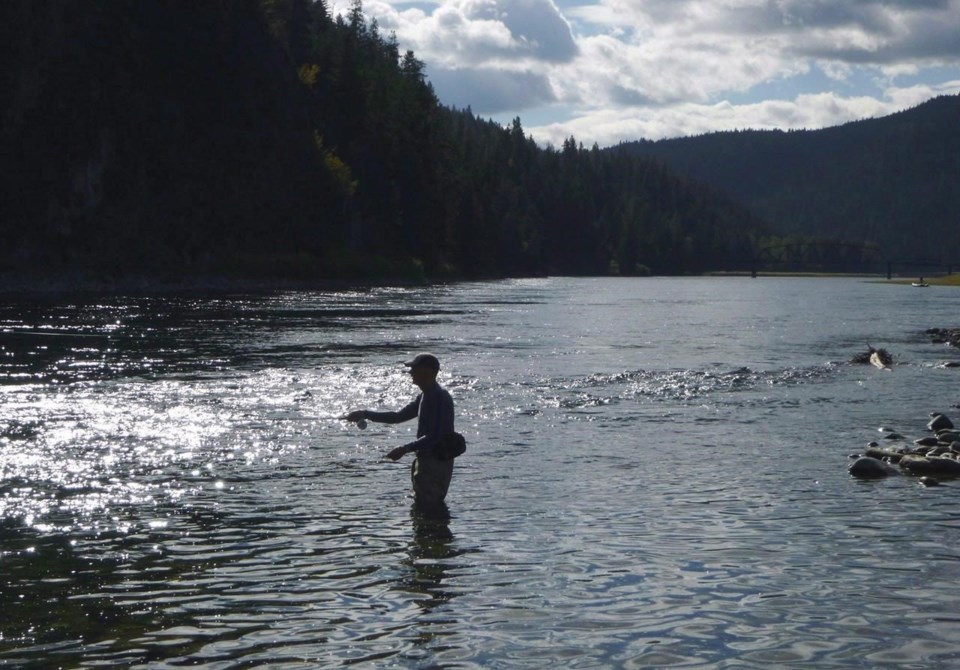A new American study has confirmed southeastern British Columbia coal mines are contaminating waters shared by sa国际传媒 and the U.S., adding the miner's attempts to remove selenium from wastewater aren't making much difference to the amount flowing south.
"It's making a small dent," said Meryl Storb of the United States Geological Survey, lead author of the newly published study.
"However, the water treatment is much less successful at reducing the total annual mass moving downstream."
Selenium, an element found in coal deposits that is toxic to fish, has been a long-running source of conflict between sa国际传媒, sa国际传媒 and the U.S. government. The contaminant is flowing from steelmaking coal mines in sa国际传媒's Elk Valley, where mining has gone on for decades.
Storb said her teams examined selenium levels in the Kootenay River, which flows through similar geography but no coal mines. Levels in the Kootenay are a tenth of those in the Elk River, in which selenium consistently exceeds both sa国际传媒 and Canadian environmental protection standards.
She said the overall annual amount of selenium flowing down the Elk River and into Lake Koocanusa has more than quadruped since measurements began in 1985.
Teck says it has installed $1.4 billion worth of water treatment at the mine and is structuring new activity to minimize the amount of runoff. It says it's capturing at least 95 per cent of selenium from current operations.
Company spokesman Chris Stannell said Teck has quadrupled its water treatment capacity since 2020 and plans to double it again by 2027. He also pointed out that the rate of increase in total selenium in the Elk River has slowed.
"Monitoring shows selenium concentrations have stabilized and are reducing downstream," he said in a statement. "We expect further significant reductions of selenium ... as additional facilities come online."
Stannell said Montana government data shows selenium water concentrations in Lake Koocanusa have been stable since at least 2012.
Storb agreed Teck's water treatment has been effective at reducing concentrations of the toxin in late fall and winter, when the river is low.
"This is the time when they can be most effective," she said. "They can treat the highest proportion of water (in the river) and that's the time when concentrations are highest."
But when flow is high, Teck's facilities treat a smaller proportion of the river's flow. Even though selenium concentrations during those high-flow periods are lower, the greater volume of water on the move means the overall flow of selenium downstream has been building.
"Most of the mass of selenium is being washed downstream during high flow periods — snowmelt, primarily," said Storb. "They're not having much impact on mass reduction."
In 1985, the report estimates just under two tonnes of selenium flowed down the Elk River into Lake Koocanusa. By last year, that had grown to nearly 11 tonnes.
Teck has said new mining operations are engineered to keep rain and snowfall off waste rock and to channel any runoff into treatment plants.
But Storb said those new operations will create larger and larger piles of waste rock, increasing the chance for selenium to leach into the environment.
"It provides a longer path and more material for the water to run over, potentially picking up more selenium as it goes along," she said.
"We've seen these very large increasing trends. Whether or not treatment is going to treat these trends, we don't know that yet."
American officials have been pressing for a joint U.S.-sa国际传媒 investigation into the situation for years under the International Joint Commission, which deals with interborder water issues. sa国际传媒 has yet to agree to one.
This month, Montana Senator Jon Tester wrote to the U.S. Secretary of State Anthony Blinken asking him to either get sa国际传媒 on board with such a probe or begin one without its northern neighbour.
"Our clean water is too important to sit by idly while sa国际传媒 fails to uphold its end of the agreement," Tester wrote Nov. 14.
Tester said he's been trying to get action on the issue since 2015.
First Nations on both sides of the border have also requested a joint sa国际传媒-U. S. investigation.
Teck is in the process of selling its Canadian coal mines to Swiss-based Glencore PLC.
This report by The Canadian Press was first published Nov. 21, 2023.
Bob Weber, The Canadian Press



